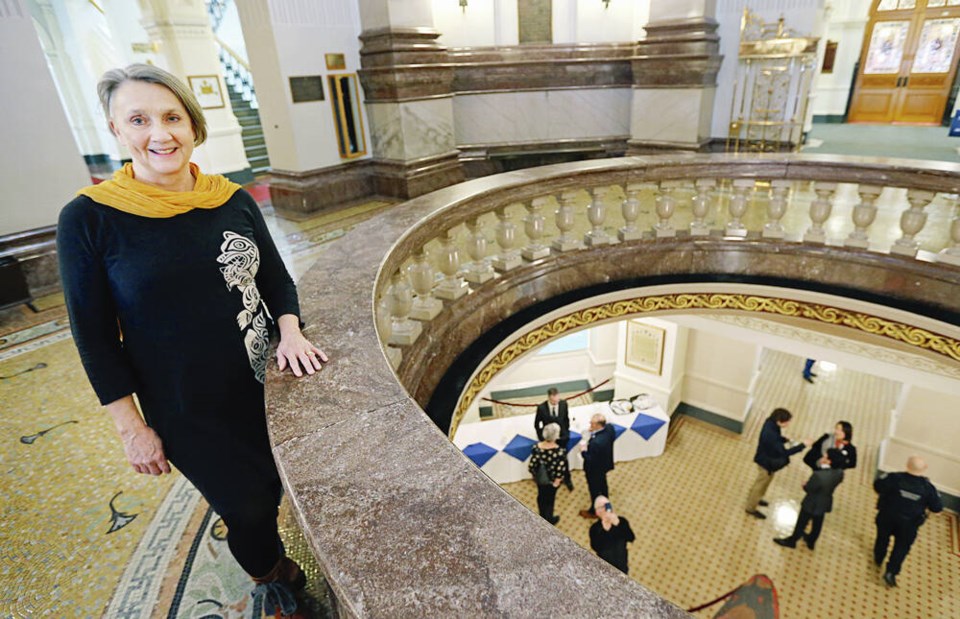Thirty-three units of transition housing for women and children fleeing violence are under construction in Duncan, Housing Minister Ravi Kahlon announced Thursday, but advocates say the need across the province is outstripping supply.
The “second-stage” housing in Cowichan, to be operated by Cowichan Women Against Violence Society, will give women and children fleeing an abusive situation a place to stay for six to 18 months — or even up to two years — while they prepare for life on their own.
The units are expected to be completed in 18 to 24 months.
Women’s transition houses are staffed around the clock to provide shelter and supports for about 30 days, while safe homes provide stays of about 10 days for women and children fleeing violence in rural and remote communities. Second-stage facilities offer housing and assistance for up to two years.
Kahlon, speaking at the legislature press theatre, announced a total of 150 new units in the province. It’s the latest phase of a 10-year $734-million Women’s Transition Housing Fund announced in 2018, with a pledge to build 1,500 new units of transition housing, safe homes, second-stage and long-term housing.
So far, 900 new units have been funded across the province. Of those, 181 have been completed — including 10 in Nanaimo, eight in Courtenay and six in Duncan — and another 715 are under construction, including 281 on the Island.
The housing minister said the pace of construction is slow in the current environment because of challenges ranging from permitting and zoning holdups to labour shortages, but spaces are opening and funding will be in place to ensure the 1,500 target is met.
Jan Bate, executive director of Cowichan Women Against Violence, said Duncan currently has a 10-room transition house offering stays of about 30 days to women and children escaping violence, and it’s often full.
“So the only resources that we can offer women when they are full is support over the phone, an hour of counselling,” said Bate. “Ten rooms is not enough for the need.”
It might take a woman more than 30 attempts before she can successfully leave a domestic-violence situation because of the lack of supports and resources to re-establish living independently, said Bate.
It’s a challenge that has only been exacerbated by the high cost of housing and living expenses, she said
Bate, who met with Kahlon at the legislature Thursday, applauded the new second-stage housing in Duncan, currently under construction at an undisclosed location, which will provide a mix of studio, one, two and three-bedroom units.
Women staying in the facility would also get help with employment, assistance with the court system and counseling support for her and her children.
Kahlon noted both the housing crisis and COVID-19 pandemic have made it more difficult for women and children to leave unsafe conditions. “We know that a lot more needs to happen because the need has only grown through the pandemic,” he said.
Last month, a B.C. Society of Transition Houses survey found that in a single 24-hour period from Nov. 30 to Dec. 1, 2022, 571 women, children and youth turned away from transition houses for lack of space.
Parm Kroad, deputy director of Victoria Women’s Transition House Society, said at the height of the pandemic, the capital region was given another 20 units of short-term transition housing because of the large spike in women in crisis having to leave domestic-violence situations.
In 2021-2022, the society fielded 4,289 crisis calls from women on its 24-hour crisis line — up almost 40 per cent from previous years — and housed 178 women with 109 children.
Kroad said the group is finding that women need to stay in emergency shelters for longer because it takes a while to find somewhere else to go. “In the past, we used to be able to refer to other shelters but they also have a backlog.”
ceharnett@timescolonist.com



